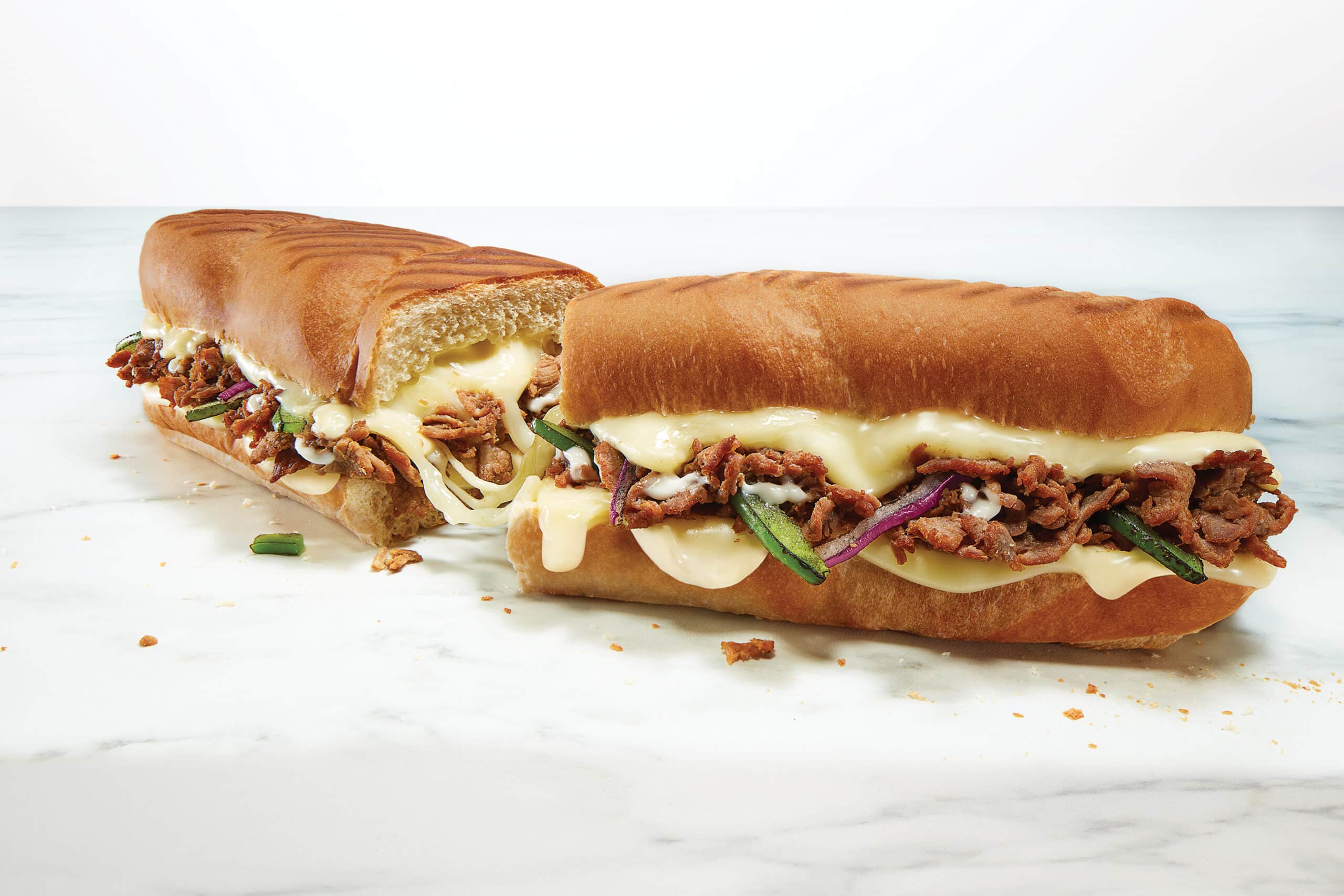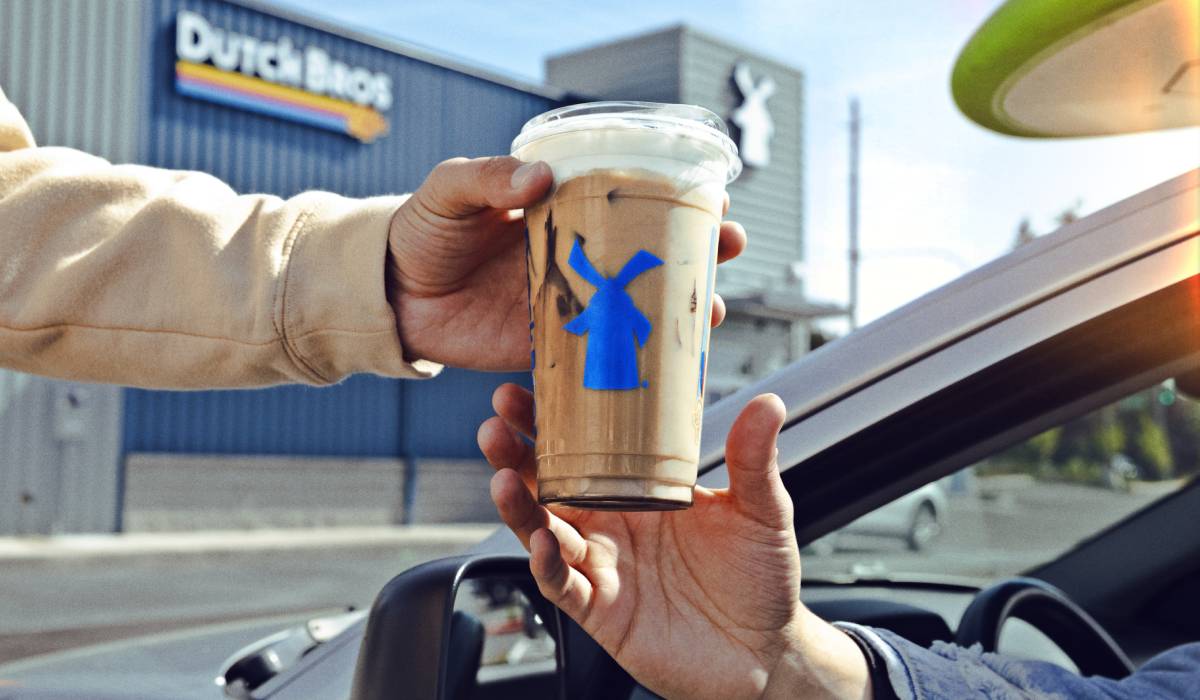When Dutch Bros Coffee debuted on the stock market last year, the rising coffee chain threw down the gauntlet—4,000 shops in the next 10 to 15 years. Although ambitious, the brand believes it’s a realistic target, and numbers in the second quarter back up that belief.
It was a period of milestones for the coffee chain. The company not only crossed the 600-unit mark, it also achieved a record $1 billion in systemwide sales for the trailing 12 months. It took Dutch Bros 27 years to reach 328 shops. In the past three and half years, it’s opened 275.
With 603 U.S. stores, Dutch Bros is the fourth-largest coffee chain in the country, behind Starbucks, Dunkin’, and Tim Hortons. If the chain’s pace keeps hold, it could be making a run for third soon. Tim Hortons ended 2021 with 637 U.S. venues, and only grew by four last year, according to the QSR 50.
“We saw that there was a massive unmet demand for Dutch Bros, and we went out and executed,” CEO Joth Ricci said during the brand’s Q2 earnings call.
In the first half of 2022, the brand opened 65 stores, putting it on pace to meet 2022 guidance of 130 openings. These units ended Q2 with annualized AUV of $2.1 million, exceeding Dutch Bros’ expectations. In the near term, the chain is focusing development on Southern California and Texas. Ricci said units based in Southern California consistently open with annualized AUVs that are among the best in the system; in Q2, seven shops opened in this market. In Texas, Dutch Bros has opened 61 shops in fewer than 18 months—a good example of the company’s fortifying strategy, which eases demand-driven challenges like longer drive-thru lines.
READ MORE: Dutch Bros Navigates Omicron with Record Development
The 2020 and 2021 classes produced AUV of $2.1 million on a trailing 12-month basis, roughly 10 percent higher than the system average. New shops typically reach margin maturity within the first three to four quarters of opening.
Although 2022’s unit growth rate is expected to be in the high 20s, low 30s percentage range, Ricci said that over time, Dutch Bros wants the annual rate to be in the mid-teens.
“I think we have to manage the pressure that it puts on the system,” Ricci said. “As I’ve said before, we will manage how it does for culture and for growth opportunities and how we’re developing our people because as we develop people, that has to fit into how we develop our pipeline and how we build that. So the recipe for that success is the people side of it is as important as the construction side of it, and we’ll make sure we manage those to hit that long-term expectation.”
Same-store sales declined 3.3 percent in the quarter, including 5.3 percent pricing and 140 basis points of negative impact from sales transfer as part of the fortifying strategy. Dutch Bros began to see traffic slowdowns in March, but matters stabilized in June and July. Same-store sales were negative 3.7 percent in April and negative 3.8 percent in May, but improved to negative 2.3 percent in June and negative 0.9 percent in July.
Most of Dutch Bros’ sales pressure is coming from California, where gas prices are up more than 30 percent compared to the rest of the country. In that state specifically, from Bakersfield to Chico, same-store sales declined 9.7 percent in the second quarter. If that market is removed, the rest of the company would’ve been down 1 percent.
The chain has also seen loss of younger, lower-end consumers as wallets tighten. Dutch Bros has witnessed up to 45 percent traffic declines in California and Oregon from household incomes of $40,000 or lower. However, Ricci clarified that Dutch Bros isn’t weighted toward this consumer, meaning traffic loss hasn’t been a significant impact.

In terms of daypart, the brand is seeing most decreases in the afternoon and evening, with drinks like iced classics, smoothies, cold brew, frost, and iced tea. Ricci suggested this traffic was potentially transferring to convenience stores.
“I have talked about the interaction between convenience and Dutch Bros and how that can interchange,” the CEO said. “Do we know exactly where it’s going? No. But what we are after now is to start to isolate Dutch Rewards in our programming, our promotion programming, our customer interface back into that afternoon, evening customer and bring that back because we still saw morning dayparts improving and actually saw growth in morning dayparts. So we’ve really got it isolated down to category, time of day, and who we think that customer is.”
The Dutch Rewards program has proven to be a useful tool since its launch in 2021. Roughly 63 percent of transactions came via loyalty in Q2. The app surpassed 4 million users, with 2.6 million being active within the past 90 days, as of June 30. Almost 450,000 90-day active members were added in the quarter. It’s about 4,000 active consumers per shop.
“We believe there is a runway to expand this program as digital penetration is about 15 points higher in our legacy markets relative to our newer markets,” Ricci said. “The benefits of Dutch Rewards continue to evolve. We have begun providing customized offers that personalize our members’ experience and drive trial frequency and upsizing. In Q2, we began to activate and target lapsed users, seeing increases in visit frequency and targeted users and an uptick in 90-day active users.”
READ MORE: Dutch Bros Loyalty Program Exceeds Expectations
In Q2, Dutch Bros took about 3 percent pricing. The brand typically uses price hikes to cover costs that are expected to remain elevated and then absorb temporary inflation. However, the company has seen traditionally transitory expenses turn into longer-term problems. With that said, Dutch Bros will consider more pricing actions in Q3. Food, beverage, and packaging costs increased 230 basis points to 27.1 percent year-over-year, but that’s a deceleration from the 400-basis-point jump seen in Q1. Labor costs grew 120 basis points to 29.4 percent.
Staffing continues to be a bright spot for the brand. Trailing 12-month shop-level turnover was 66 percent in Q2, well below the industry average. The chain entertained 64,000 applicants in the second quarter, and hired 3,500.
For managers, turnover was in the low double digits, while operator turnover was almost nonexistent. In the past year, Dutch Bros promoted 50 operators. As of June 30, 115 of these employees are running 336 company-run shops, which averages out to 2.9 units per operator.
“We’re not having any problem hiring good people, and that goes across the system,” Ricci said. “Turnover moderated. And so we haven’t really needed to play the market challenge game. I think a year ago, we were talking about hiring, bonuses, and things like that. Well, we never did any of that because we really wanted to focus on working at Dutch Bros and the value of working at Dutch Bros and why that was important and how we have that combination of good wages and tips. But we’ll remain agile. We’ll remain responsive to what the market needs, and we’ll continue to evaluate it. But so far, the strategy we put in place about 18 months ago has held.”
For 2022, Dutch Bros is expecting at least $715 million in revenue and flat same-store sales growth. Adjusted EBITDA is projected to be $90 million. Capital expenditures are expected to be between $175 million to $200 million, including $15 million to $20 million for a new roasting facility that should open in late 2023 or early 2024.









